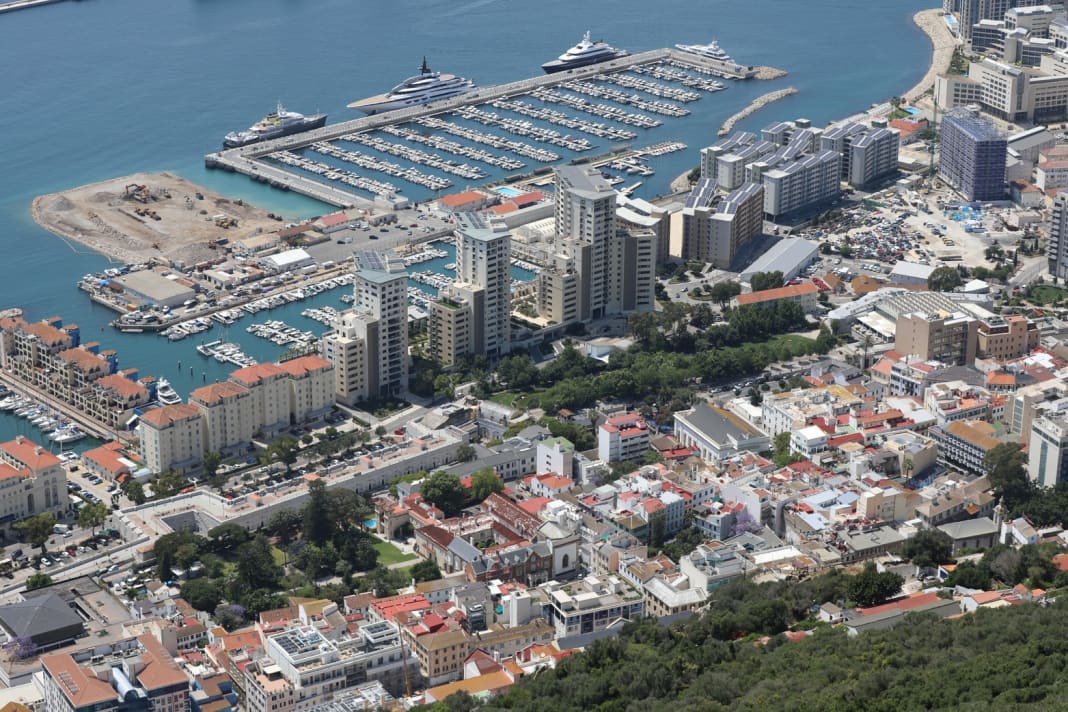





For the ancients, they signalled the end of the world: the Pillars of Heracles. They have their origins deep in the myths of ancient Greece. According to legend, Heracles, son of Zeus, created them at the entrance to the Strait of Gibraltar to mark the boundary between the known world and the unknown. According to legend, the famous hero attached signs to the pillars with the inscription (still known today): "Non Plus Ultra" - after this comes no more.
Gibraltar: the end of the world or the beginning?
A clear warning to sailors not to venture into the unexplored expanses of the Atlantic, with its long swells and endless horizon. Unsurprisingly today, the tablets have never been found. However, as not even a stone of the actual pillars was ever discovered, scholars soon identified geographical features with them: The striking Rocks of Gibraltar on the European side and the Jbel Musa massif on the African side.
Throughout history, the mountains themselves have become a symbol of discovery and adventure."
Ancient and Renaissance seafarers regarded the crossing of the Strait of Gibraltar as a gateway. Not as the end of a voyage, but as the beginning. For their caravels and carracks, they symbolised the farewell: Last Exit Europe.
Europa Point is the southernmost tip of the Gibraltar peninsula. Its striking lighthouse, gleaming white with a red band, rises on high cliffs at the foot of the rock. It is an important landmark and sea mark for all skippers coming from the Mediterranean and heading for the Bay of Algeciras and the harbours of Gibraltar. It was built in the time of Queen Victoria and is still operated by Trinity House, the lighthouse authority in London.
The Rock of Gibraltar
Gibraltar is a British overseas territory with limited internal autonomy and strong ties to the United Kingdom. Conquered in 1704 and officially handed over to Great Britain in the Treaty of Utrecht in 1713, the territory is barely seven square kilometres in size (roughly equivalent to the area of the Hamburg suburb of Blankenese on the River Elbe).
However, Gibraltar's strategic importance as a control point across the Strait of Gibraltar, an important sea route between the Atlantic and the Mediterranean, was an invaluable key to the Empire's former maritime power. And to emphasise this role, this key has even featured on the official flag of Gibraltar since 1982.
Today, the limestone rock itself, which towers far above the surrounding area, is one of the region's most popular tourist destinations."
Visitors can take the Gibraltar Cable Car to the summit at a height of 426 metres. The colony of around 200 wild Barbary apes that live on the rock are another attraction. But be careful: carry rucksacks at the front!
The panoramic view from the viewing platform and various vantage points is breathtaking. On a clear day, the Moroccan coastline, around 21 kilometres away, is clearly visible (the southernmost point of the European mainland and the actual crossing to the Atlantic, Tarifa in Spain, lies to the west. This is also where the Strait of Gibraltar reaches its narrowest point at 15 kilometres).
Must see: Highlights in Gibraltar
British flair is omnipresent in Gibraltar. One place where visitors can experience a particularly strong British influence is Grand Casemates Square. This lively square in the historic centre of Gibraltar is lined with pubs, cafés and restaurants serving fish and chips, pints of bitter or a cuppa tea.
The most famous pubs include the Lord Nelson (named after the naval hero who won his greatest victory at nearby Cape Trafalgar in 1805 but lost his life) and the Angry Friar in the neighbouring Main Street. The red telephone boxes and postboxes are also very British.
In addition, the architectural style and names such as Queensway Road and Winston Churchill Avenue are reminiscent of the distant mother country."
Other items on the bucket list for a visit to "Gib", as it is shortened, include the 18th century Great Siege Tunnel, St Michael's Cave, a stalactite cave that is also used for concerts, the Gibraltar National Museum in Bomb House Lane and the nature reserve on the upper slopes of the Rock with its diverse Mediterranean flora and fauna.
Entry, customs and berths
Citizens of the European Union can enter Gibraltar with a valid passport or identity card, but must observe the customs and entry regulations, as Gibraltar is not part of the Schengen area and carries out its own controls.
For guests on their own keel, there are two ports of call on the west side of the peninsula: On the one hand Ocean Village/ Marina Bay just south of the airport runway (VHF channel 71, berth allocation, full service including petrol station.
Caution: No entry and exit is permitted during flight operations and warning lights)."
The other option is the centrally located, exclusive Queensway Quay Marinaalso with a full range of services (registration: UKW-71). Both harbours are also designed for mega yachts, regular-sized boats moor with a mooring line at the bow and the stern to the jetty, as is usual in the Mediterranean.

